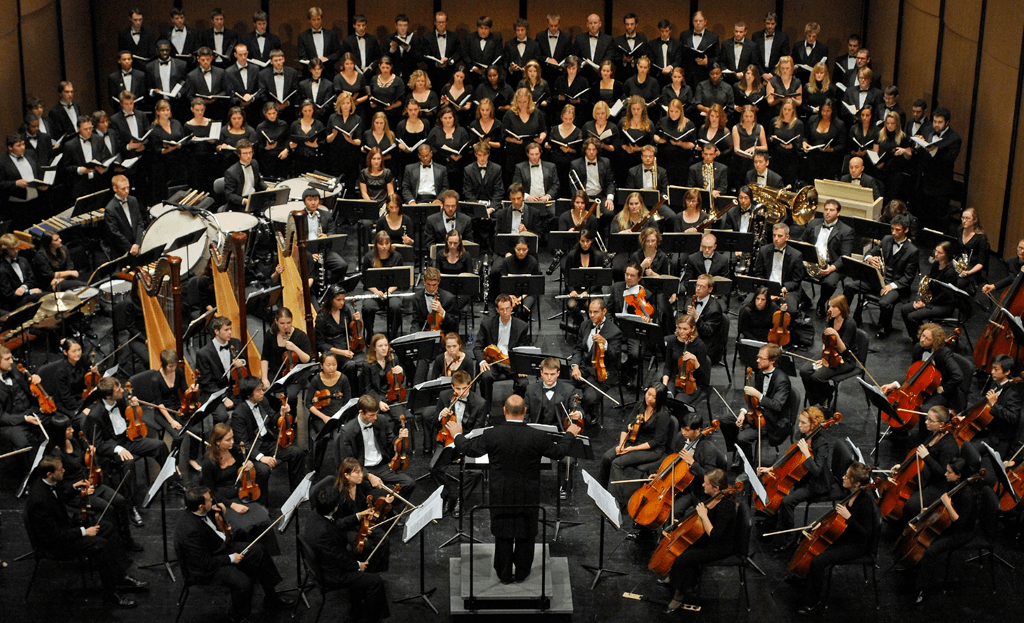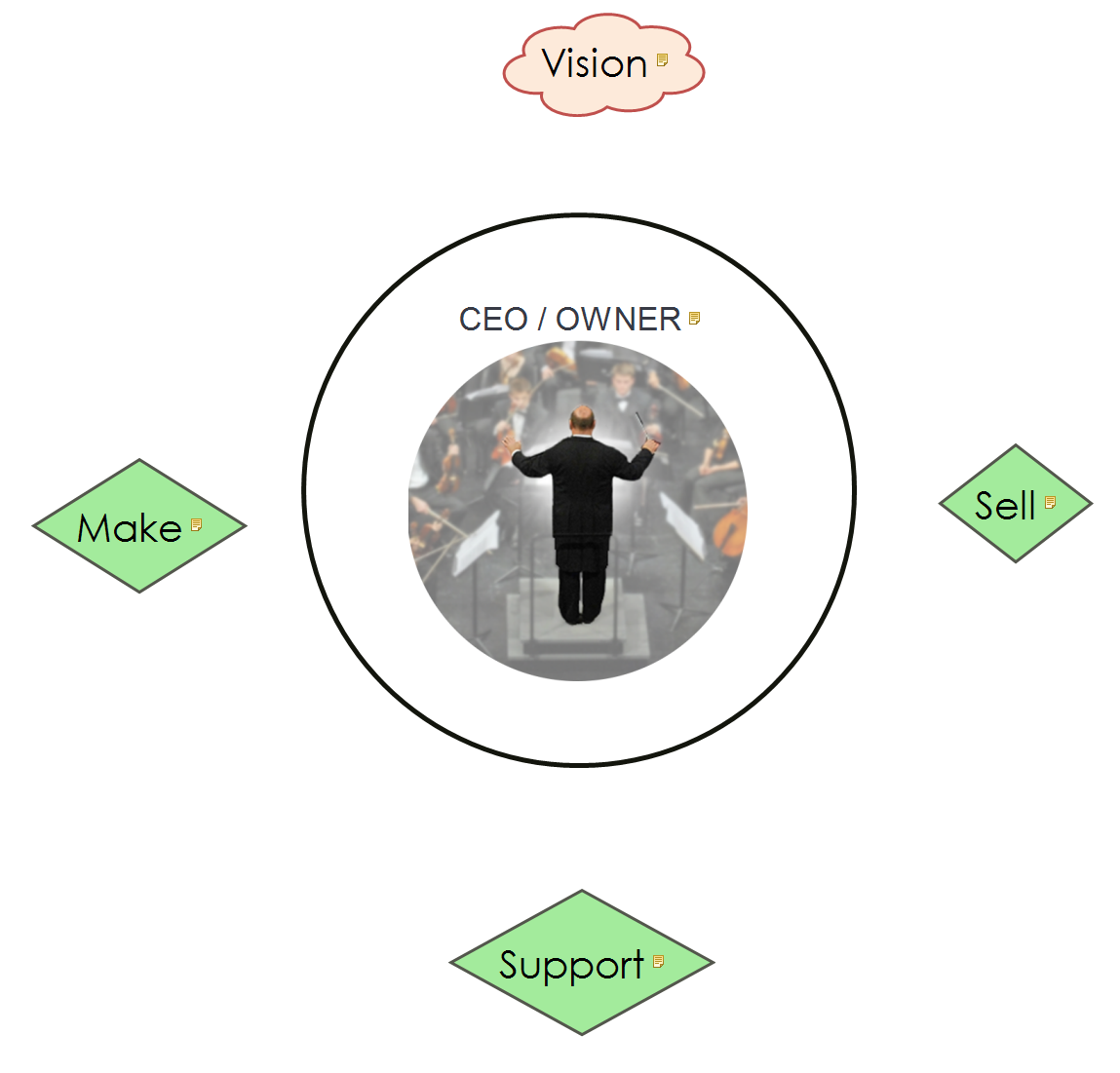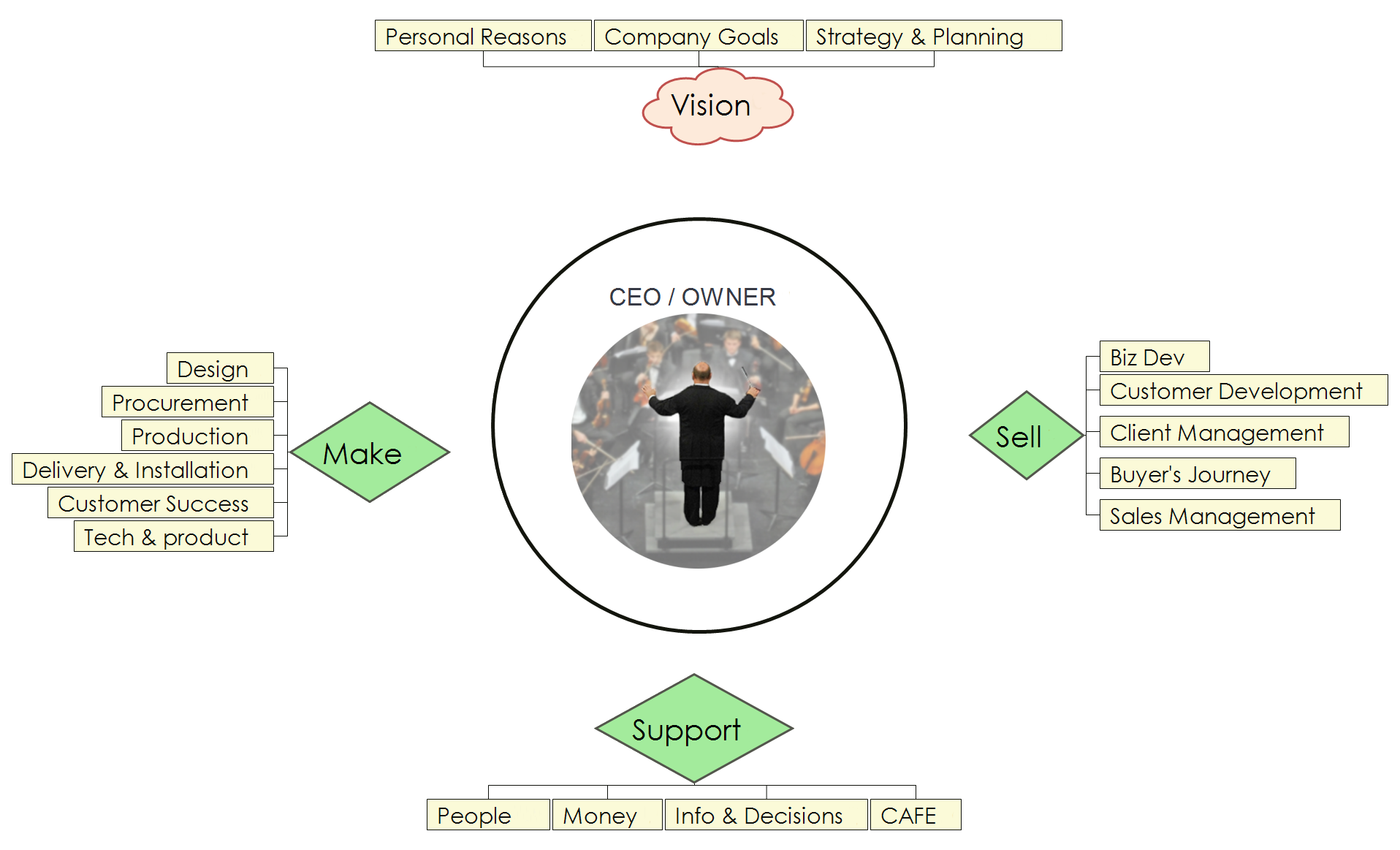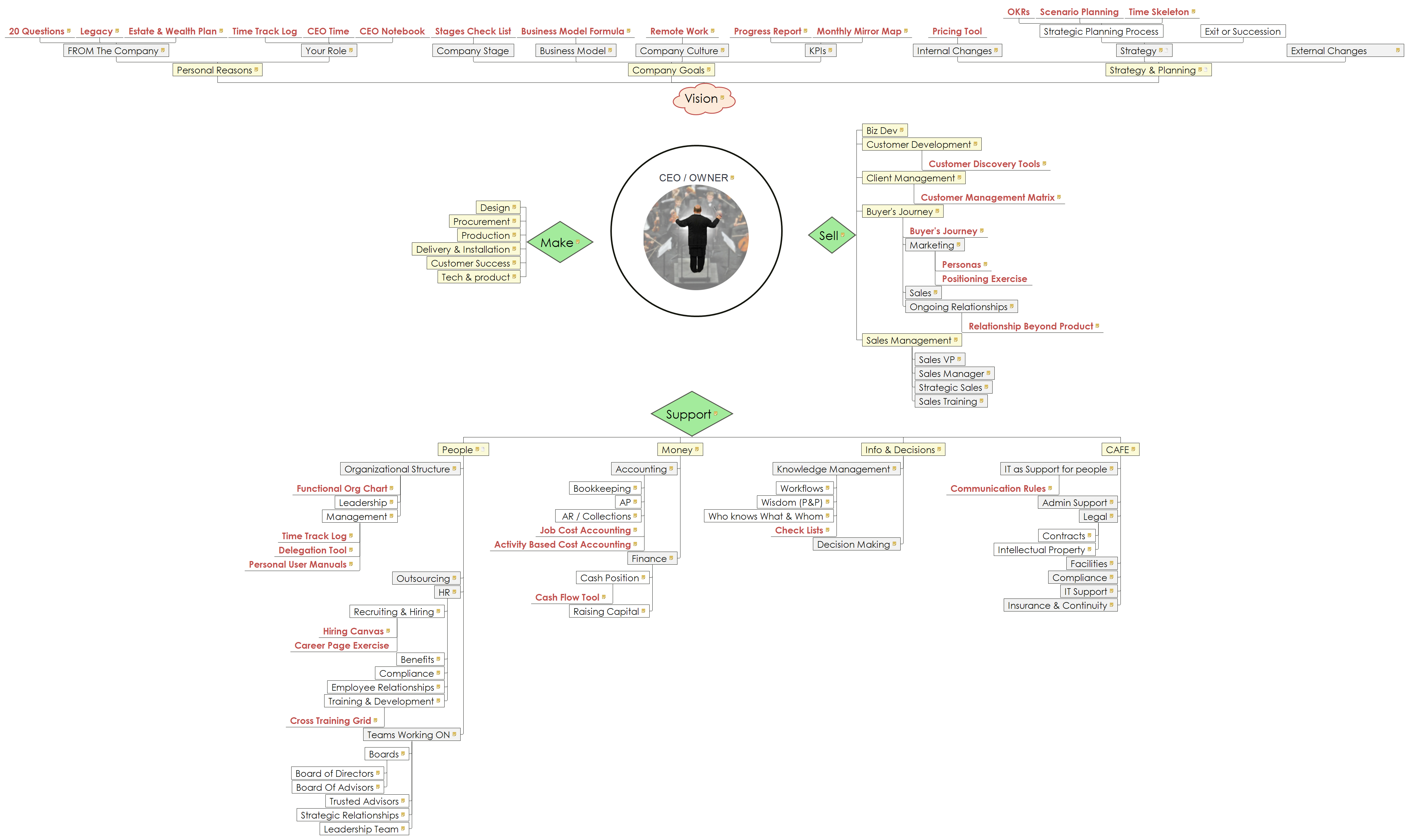In a previous post I discussed the 4 Parts of a Function and why it's useful to see your company as a compilation of functions rather than jobs. If you haven't read that one, it will make more sense to do it before you continue reading. I'll wait.
This time I want to examine what it looks like to see your entire company through the lens of functions.

When companies start out, they look like this. This one guy performs all the functions a company needs done.
But when companies scale they don't look like this ...

They look like this:

What you see is specialization. While the one man band performs all the functions, in an orchestra people perform different functions. And each person performs fewer functions.
But it's unlikely your company produces music so let's dispense with the analogy. In reality, every company needs to do 3 things to survive:
- MAKE something people want to buy
- Find those people and SELL to them
- SUPPORT the making and the selling
The company accomplishes this by having people perform functions such that the output of each function - no matter who performs it - contributes to either MAKING, SELLING, or SUPPORTING.
There's actually a 4th category for companies that want to thrive, not just survive and that is have a VISION of where they're going. I put the CEO in here as an orchestra conductor because like the conductor who makes no music, CEO doesn't produce any of these functions directly. His or her function is to coordinate all the others - even if that same person does perform some of the other functions. (Which usually happens in smaller organizations.)

As soon as you start to hire people, they perform some of those functions and it usually makes sense to break them down into sub-functions. It turns out that all the sub-functions in every category look very similar (except for the MAKE functions because the products are different.)
The first level of sub-functions looks like this:

In a well-run company the functions all work together to make things people want to buy, find those people and sell to them, and support the making and the selling in the direction envisioned by the people who run the company. Each of those functions has an output. Even the one-man-band is producing all those outputs when needed. Of course, a smaller company doesn't need most of these functions as often as a larger one.
When you break down all the sub-functions it looks like this. Too much detail to go into here but you get the idea.

You can actually build your entire org chart around functions (rather than a hierarchy of people) to help you scale more easily. I have a short (9min) video about it here. And other videos on my YouTube Channel.
